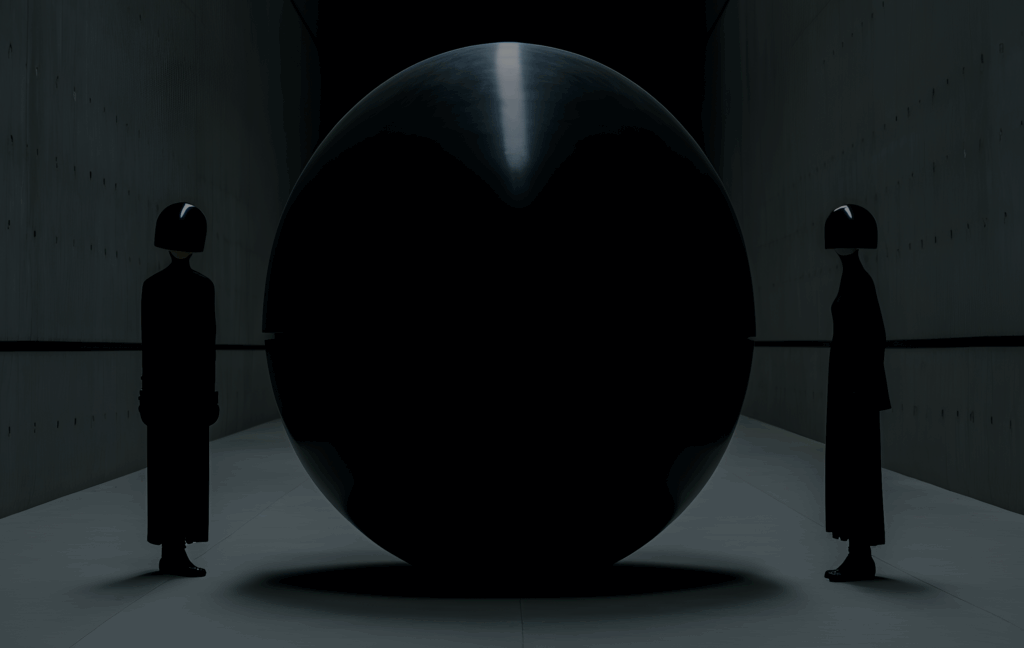
Native Instruments x Pangea
1. Pangea’s sonic signature is described as “dystopian sound design.” Can you walk us through the creative process behind this sound? What were some of your key influences, and how did you use the raw, visceral analogue synths to capture that distinct atmosphere? x
Pangea began as a project to push the boundaries of what synths could do in cinematic sound, blending influences that inspire both seasoned composers and newcomers. The instrument evolved from running legendary analogue synths through complex processing until some were on the edge of collapse, and some created ethereal, other-worldly beauty.
Influences ranged from Vangelis’ Blade Runner atmospheres, to Nine Inch Nails’ abrasive textures and the haunting soundscapes of modern trailer music. The goal was never to polish or tame these sounds, but to preserve their volatility. By capturing those visceral edges and then running them through the incredible Pangea engine, we created a palette that feels alive, unstable, unexpected and deeply cinematic.
A huge part of the Pangea signature is the layering of its original sound sources. The dual engine lets you combine a heavily stacked synth patch with a more basic waveform to add grit and aggression, or place a pulsing texture beneath a sustain to create subtle motion within a single patch. Scores from Alien (1979), Arrival, Ex Machina, Blade Runner 2049, all the way to recent trailers and scores such as Bugonia, Weapons, 28 Years Later, Tron: Ares, Savant, Alien: Earth, and Saltburn inspire this sonic world of Pangea. During the process of creating it, one of the inspiring features we discovered was how Pangea translated the combinations of these treasured synth oscillators to yield results that weren’t physically possible with the hardware alone.
2. The Abyss is a “Kontakt FX Sampler” designed to turn a single sample into a playable instrument. This is a very different approach from a traditional sample library. What was the inspiration for creating The Abyss, and how do you see composers and sound designers using it in their workflows, particularly alongside Pangea?
The Abyss is the wild card: a way to transform any single sample into something new, personal and cinematic. Building upon the Pangea engine, we pushed this further to create a playable instrument from a single sample.
You can drop in anything, an organic texture, a synth hit, or an experimental noise, and The Abyss can stretch it, destabilise it, and run it through motion-driven FX. The result is an expressive instrument that goes far beyond its source material, creating epic soundscapes or signature sounds from the most unexpected inputs.
Paired with Pangea’s curated textures, the two together give composers both ready-to-go palettes and limitless sound-sculpting freedom.
3. We were thrilled to see Pangea featured in the Dune: Part Two trailer. How did that collaboration come about, and what was it like hearing your instrument contribute to the sound of such an iconic and atmospheric film?
Hearing Pangea in the Dune: Part Two trailer was a beautiful moment for Infinite Samples. That universe already defines the gold standard of cinematic sound design, so knowing our instrument contributed to it was a great honour.
The collaboration came through our friend and artist Eddie Thoneick. Eddie was drawn to Pangea’s darker, unstable textures, the kind of sound that fits Dune perfectly. Hearing it layered with the visuals was one of those rare moments when the purpose behind the instrument felt fully realised: to push cinematic sound into new territory. We made a breakdown of the usage, which you can view below. The sound Eddie created within Pangea was so unwieldy and raw, it embraced the imperfections and beauty reflected in the Dune series.
4. Both Pangea and The Abyss have powerful motion and multi-FX engines. These features are key to creating evolving, cinematic textures. Could you delve a bit deeper into these engines? What kind of sonic possibilities do they unlock for composers, and why was it so important to the team to build this level of modulation and control directly into the instruments?
Coming from a love of modular synthesis and the open-ended possibilities that exist in that world, the motion engine was integral to the goal of allowing the instrument to have a degree of organised chaos. The engines that drive Pangea and The Abyss exist to breathe life into each and every sound. The powerful motion-textures both fracture and evolve sounds over time. The motion and FX are not add-ons in these instruments; they’re woven into the core of Pangea and The Abyss.
The patches can morph into pulsing rhythms, dissolving atmospheres, or chaotic dystopian soundscapes. The palette spans from fragile ambiences to overwhelming walls of sound. Because the engines are so complex under the hood, composers can achieve these transformations instantly, without breaking creative flow or relying on external plugins. When deadlines are tight, giving composers cinematic results inside Pangea and The Abyss keeps the focus where it belongs: on musical storytelling and maintaining those lightning-in-a-bottle moments.
5. Looking ahead, what’s next for Infinite Samples? How do you plan to continue pushing the boundaries of cinematic sound design, and are there any new directions you’re excited to explore with your next instruments?
We’ve been building an immersive platform, honouring true music creation at the highest level. This Pangea update represents the culmination of years of groundwork and the beginning of revealing to the world what we’ve been quietly creating. Many of the industry’s biggest names already trust us, often through word of mouth, which is the most authentic validation of our approach, and this project is expanding each day.
As a brand, we embrace mystery. In an era where musicians are pushed to become content creators, instead of music creators, and brands in every industry are placing their team front and centre, we let the work speak for itself. Our environment celebrates the cinema of the 80s and 90s, the era many of us grew up in, capturing a nostalgic magic that’s hard to define but which is present in our trailers, visuals and sounds.
For Infinite Samples, we are expanding the narrative laid out in the original Pangea and Abyss trailers (and in every pack name on the site) into a fully realised world. This will unfold with the Pangea update trailer on 22 September and continue over the coming months as new interactive areas go live. Every element has been carefully thought through. We’re working with incredible artists, composers, producers, sound designers and musicians at the top of their game to create something that feels truly unique. We are creating three pillar Kontakt instruments representing the distinct regions of the Infinite Samples world, with every sample pack fitting seamlessly into this sonic identity and narrative.
We’ve also developed a cutting-edge watermarking system to protect our artists’ sounds. This enables us to trace back any shared sample to an individual user via their email and IP address, whether downloaded or captured through streaming. Our goal is to make this technology an industry standard, giving artists a level of protection they don’t currently have, and respecting the skills that have taken them a lifetime to develop.
Alongside this, we’ve launched Dark Matter, our custom music house, with its first industry volumes now live in collaboration with Colourbox Music (Civil War, 28 Years Later). We’re also introducing Anamorphic, bringing our creative visual ethos to partners who are interested in collaborating with us.
We’re deeply considering the future of music creation and, of course, AI, and are currently exploring Ethical AI collaborations that inspire workflows and reward artists, with a human-centric stance. Music is a personal, cultural and visceral thing to each and every person on earth, both in how they create it and how they consume it.
